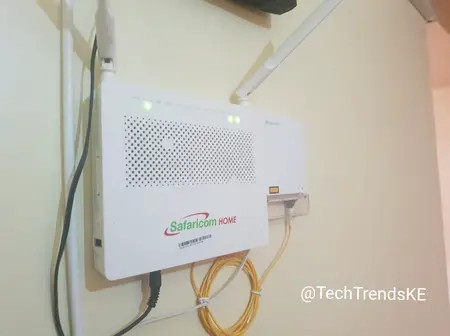Not long ago, the Kenyan living room revolved around a single TV set, tuned to a handful of channels, often controlled by whoever paid for the monthly decoder. Today, the scene looks very different. Netflix plays in the sitting room, Spotify hums in the kitchen, and a teenager upstairs is livestreaming on YouTube — all at once, without a pause to buffer.
At the center of this shift is Safaricom Home Fibre, which has become the invisible backbone of modern entertainment in many urban homes. By delivering reliable high-speed internet, it has turned ordinary living rooms into multiplexes, concert halls, and even digital classrooms, fueling what many now call the Kenya streaming boom.
Safaricom’s fibre packages, which scale from basic to premium tiers, are changing how households interact with entertainment. Parents wind down with dramas, children rotate through YouTube animations, while young adults dive into online gaming or Twitch streams.
Because the service supports multiple devices at once, family entertainment no longer revolves around a single screen. That flexibility has created new rituals, like weekend streaming marathons, but also personal silos, where everyone curates their own digital world. Safaricom’s network quietly enables both — shared moments and parallel experiences under one roof.
Streaming in Kenya has a rhythm of its own. While daytime connections are often dedicated to remote work and schooling, evenings and late nights belong to leisure. Fibre users routinely binge-watch past midnight, a habit shaped by quieter networks and the cultural embrace of “catch-up TV.”
This nocturnal pattern has even influenced local creators, many of whom time their livestreams or uploads to coincide with evening peaks, when audiences are most engaged. For them, Safaricom Home Fibre is less a utility and more a stage manager, ensuring their work reaches viewers without interruption.
The Kenya streaming boom isn’t just about consumption. It has opened doors for a growing creative class. Musicians upload high-quality tracks to Spotify and Apple Music. Podcasters record, edit, and distribute episodes from their bedrooms. Independent filmmakers cut and export large files without booking expensive studio time.
For these creators, Safaricom Home Fibre functions as a production tool. It allows them to participate in the global digital economy without relocating to foreign hubs. In that sense, the company’s network isn’t just powering entertainment at home — it’s powering careers.
But while fibre clears technical hurdles, it doesn’t eliminate economic ones. Households juggling Netflix, Showmax, Spotify, and Apple Music subscriptions quickly find themselves spending far more than the old pay-TV model.
Many families now rotate subscriptions month to month, chasing shows or football seasons. Others lean on Safaricom’s bundled data and voice add-ons to soften the load. The technology may be seamless, but the financial calculus is anything but.
As Safaricom expands its network, several questions remain unresolved. Will the company extend fibre coverage aggressively enough to close the rural-urban divide? Can homegrown platforms compete with global giants in this new landscape? And will families find a sustainable way to balance streaming choice with affordability?
For now, the answer is clear in urban homes: Safaricom Home Fibre has become the quiet engine of Kenya’s streaming boom. It is reshaping entertainment, redefining family dynamics, and giving local creators a platform to dream bigger.

Leave a Reply